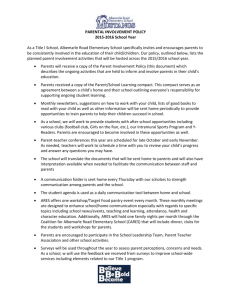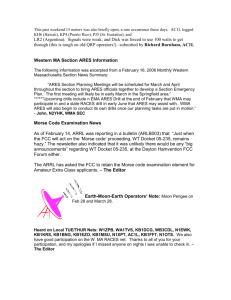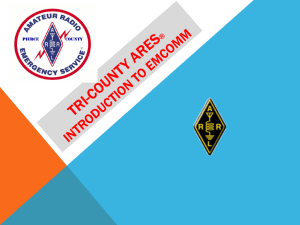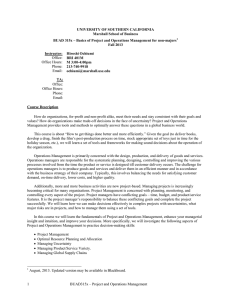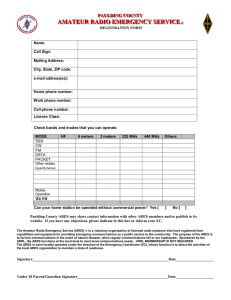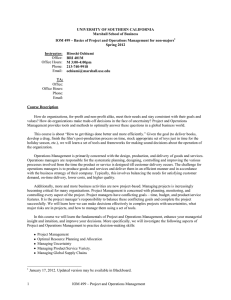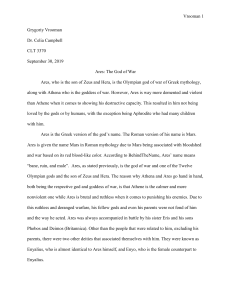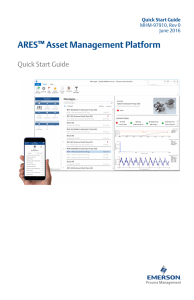Optimizing Disaster Relief: Real-Time Operational and Tactical Decision Support Gerald G. Brown
advertisement
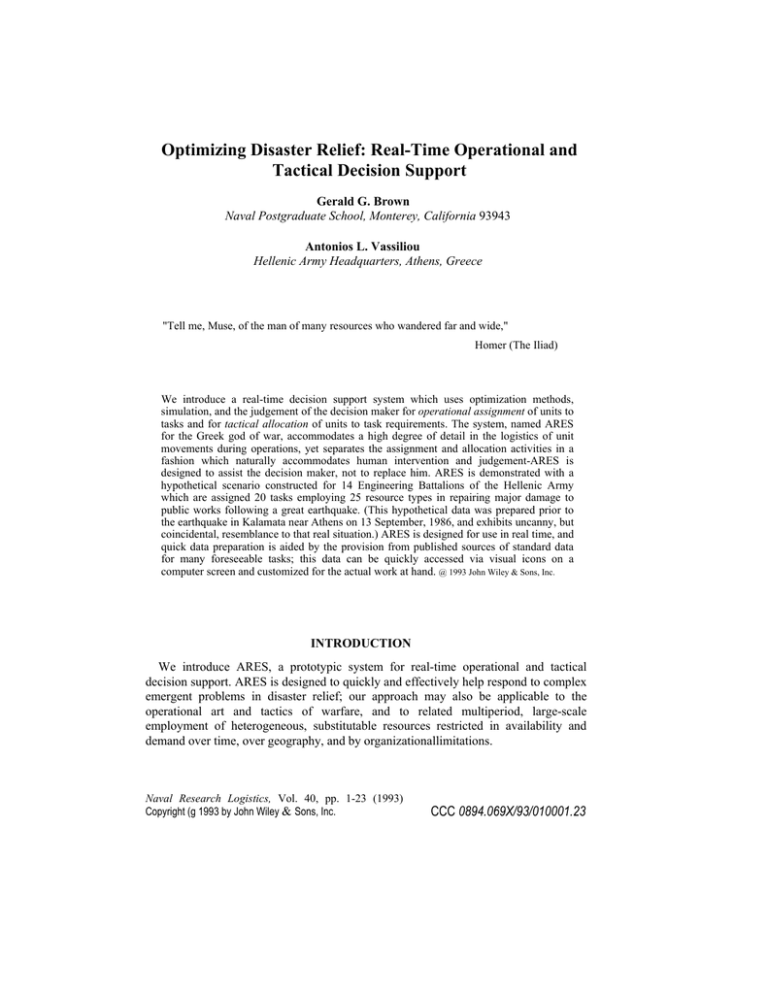
Optimizing Disaster Relief: Real-Time Operational and Tactical Decision Support Gerald G. Brown Naval Postgraduate School, Monterey, California 93943 Antonios L. Vassiliou Hellenic Army Headquarters, Athens, Greece "Tell me, Muse, of the man of many resources who wandered far and wide," Homer (The Iliad) We introduce a real-time decision support system which uses optimization methods, simulation, and the judgement of the decision maker for operational assignment of units to tasks and for tactical allocation of units to task requirements. The system, named ARES for the Greek god of war, accommodates a high degree of detail in the logistics of unit movements during operations, yet separates the assignment and allocation activities in a fashion which naturally accommodates human intervention and judgement-ARES is designed to assist the decision maker, not to replace him. ARES is demonstrated with a hypothetical scenario constructed for 14 Engineering Battalions of the Hellenic Army which are assigned 20 tasks employing 25 resource types in repairing major damage to public works following a great earthquake. (This hypothetical data was prepared prior to the earthquake in Kalamata near Athens on 13 September, 1986, and exhibits uncanny, but coincidental, resemblance to that real situation.) ARES is designed for use in real time, and quick data preparation is aided by the provision from published sources of standard data for many foreseeable tasks; this data can be quickly accessed via visual icons on a computer screen and customized for the actual work at hand. @ 1993 John Wiley & Sons, Inc. INTRODUCTION We introduce ARES, a prototypic system for real-time operational and tactical decision support. ARES is designed to quickly and effectively help respond to complex emergent problems in disaster relief; our approach may also be applicable to the operational art and tactics of warfare, and to related multiperiod, large-scale employment of heterogeneous, substitutable resources restricted in availability and demand over time, over geography, and by organizationallimitations. Naval Research Logistics, Vol. 40, pp. 1-23 (1993) Copyright (g 1993 by John Wiley & Sons, Inc. CCC 0894.069X/93/010001.23

